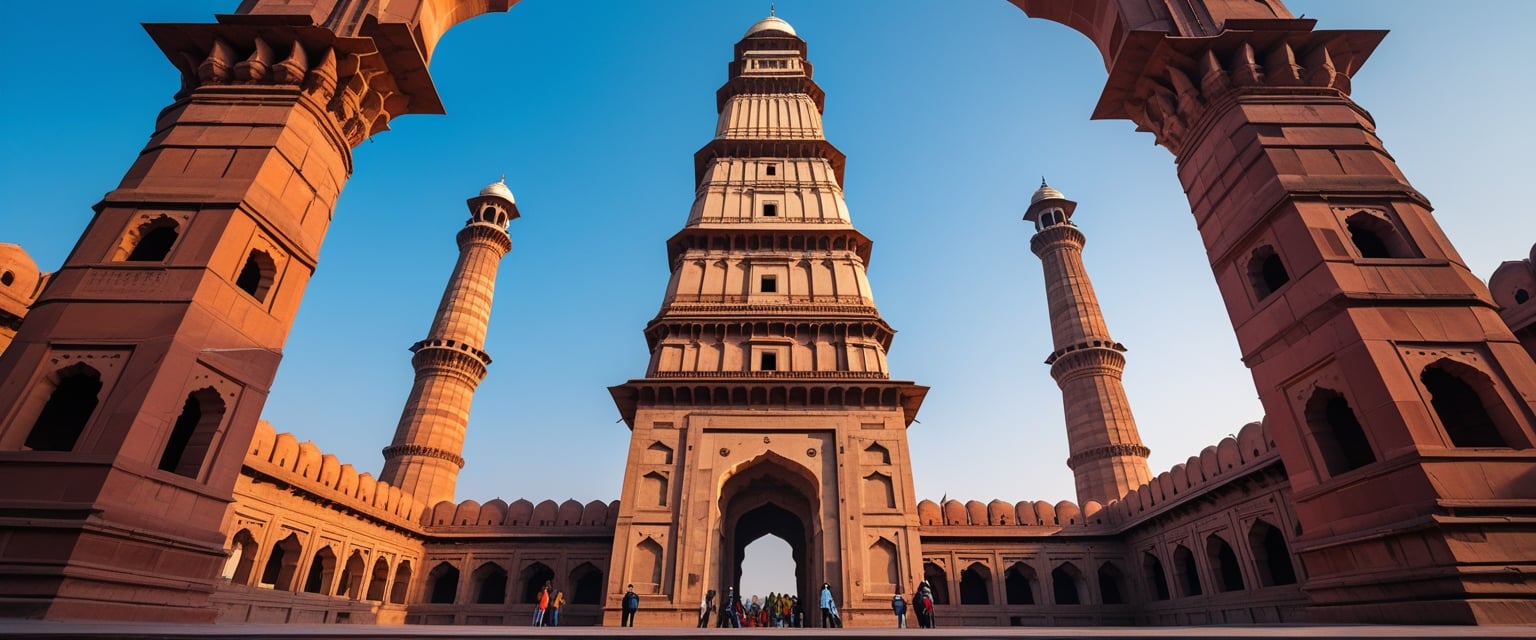How Tall Is Qutub Minar? Amazing Facts Revealed — the tower rises to 72.5 meters, making it the tallest brick minaret in the world. Standing tall in South Delhi, the Qutub Minar is one of India’s most recognized landmarks and a UNESCO World Heritage Site. The minaret rises to a height of about 72.5 meters (238 feet), making it the tallest brick minaret in the world. Built mainly of red sandstone with some marble, its detailed carvings and inscriptions showcase the craftsmanship of early Indo-Islamic architecture.
The structure is well-known not only for its towering height but also for its heritage. Construction was initiated by Qutb-ud-din Aibak in the early 13th century and was later continued by successive rulers, taking many years to finish. Today, travelers can discover the wider Qutub complex, which includes mosques, tombs, and the Iron Pillar that has remained free of rust for more than 1,500 years. How Tall Is Qutub Minar? Amazing Facts Revealed
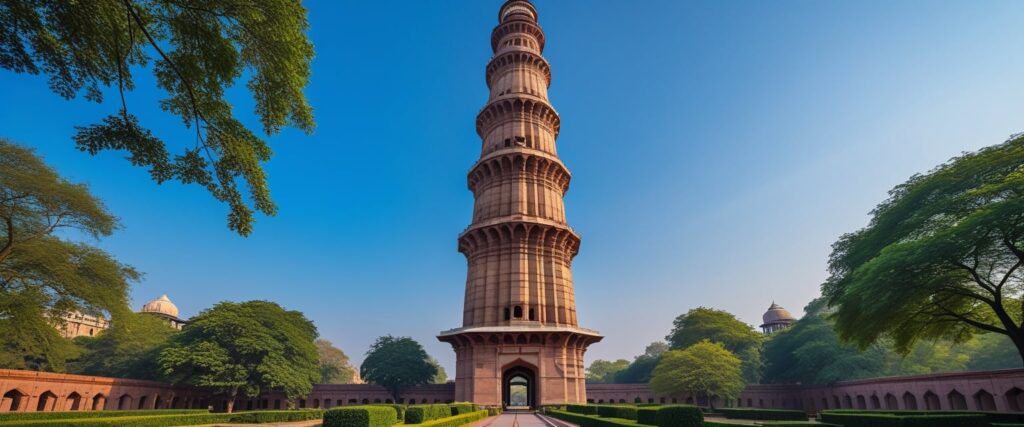
For those planning a visit and wondering How Tall Is Qutub Minar?, the complex is open daily from sunrise to sunset, including Fridays. Tickets are reasonably priced, with free entry for children under 15. Although night visits are not permitted, evening light shows are occasionally organized, offering a unique view of the monument. The cooler months from November to March are considered the most pleasant time to explore the site.
Table of Contents
How Tall Is Qutub Minar? Amazing Facts Revealed
How Tall Is Qutub Minar? Amazing Facts Revealed as the monument proudly stands at 72.5 meters (238 feet), making it the tallest brick minaret in the world. Built with red sandstone and marble, the tower narrows from a wide base of 14.3 meters to just 2.7 meters at the top. Its five storeys, each marked with balconies and intricate carvings, showcase the brilliance of Indo-Islamic architecture.
Key Facts About Qutub Minar
Qutub Minar stands as one of Delhi’s most significant monuments, and for those curious about How Tall Is Qutub Minar?, it is admired for its impressive height, intricate carvings, and layered history. The structure showcases the fusion of early Indo-Islamic architecture and continues to be a UNESCO World Heritage Site under the care of the Archaeological Survey of India (ASI).
Height and Structure Details
Qutub Minar is the tallest brick minaret in the world, measuring about 72.5 meters (238 feet) in height. It tapers from a base diameter of 14.3 meters to just 2.7 meters at the top.
The tower consists of five distinct storeys, each marked by a projecting balcony. The first three levels are built with red sandstone, while the fourth and fifth include marble and sandstone.
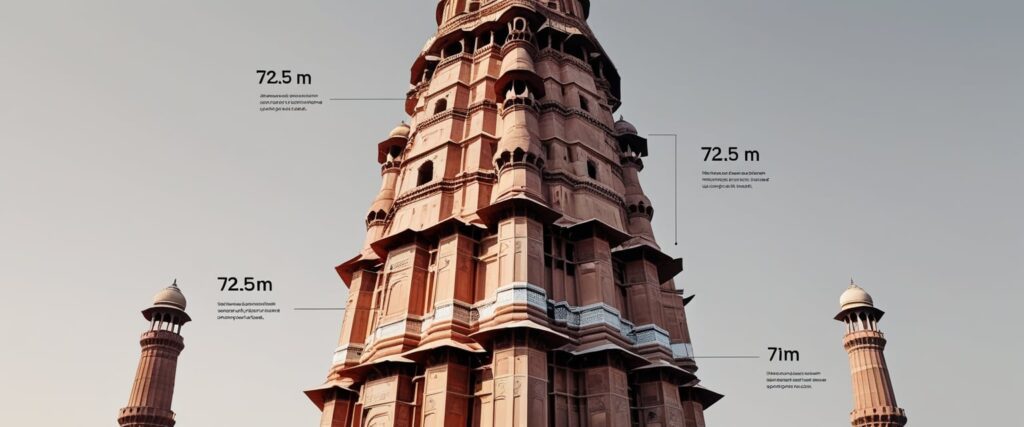
Its spiral staircase once had 379 steps, but public access to the top has been closed since 1981 after a tragic stampede. Despite this, the monument’s towering design continues to dominate the skyline of South Delhi, making it a striking landmark comparable in scale to modern high-rise buildings.
Materials Used in Construction
The minaret is primarily made of red sandstone, which gives it its distinctive color and texture. Later additions incorporated marble, particularly in the upper sections.
Builders reused stones from dismantled Hindu and Jain temples, and for those wondering How Tall Is Qutub Minar?, this also explains why carvings of Hindu motifs and deities appear on certain sections. Such reuse of materials has long sparked discussions about the monument’s origins and symbolism.
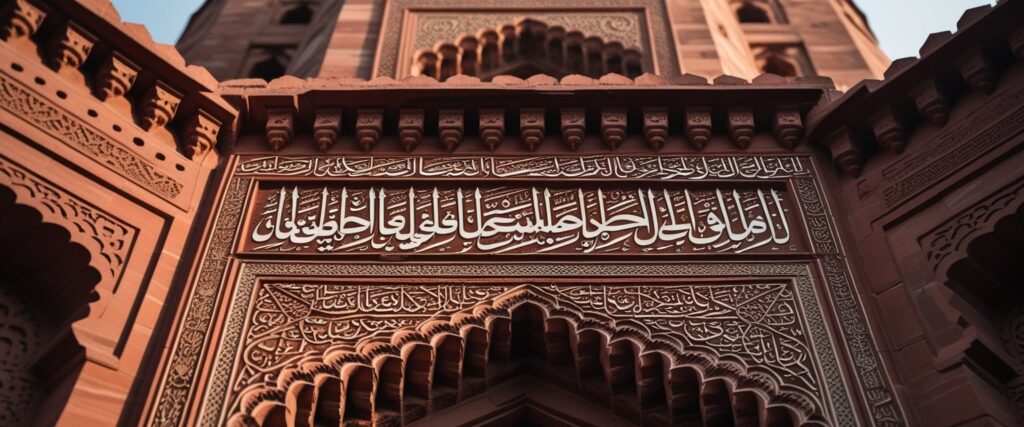
The nearby Quwwat-ul-Islam Mosque, also built using materials from earlier temples, highlights this layered history, and when asking How Tall Is Qutub Minar?, one can see that such reuse of stone was not exclusive to Delhi. Similar practices are visible in monuments like the Agra Fort and Humayun’s Tomb, where successive rulers left their architectural influence.
Historical Significance and Fame
Qutub Minar is famous as a victory tower, traditionally linked to Qutb-ud-din Aibak, the founder of the Delhi Sultanate. However, some historians argue that his successor Shams ud-Din Iltutmish may have completed most of the construction.
It symbolizes the early establishment of Muslim rule in northern India and the shift from Rajput to Sultanate power. The tower is also admired for its intricate inscriptions in Arabic and Nagari scripts, showcasing religious verses and historical records.
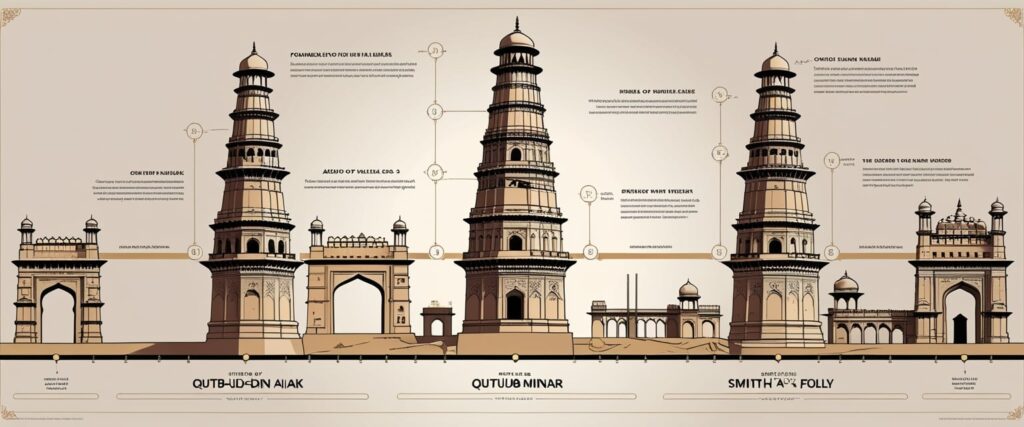
In 1993, UNESCO acknowledged Qutub Minar and its surrounding complex, and for visitors curious about How Tall Is Qutub Minar?, it was placed alongside global heritage landmarks like the Taj Mahal, Red Fort, and Sun Temple at Konark. This honor emphasizes its cultural and architectural value far beyond India.
Construction Timeline
The construction began in 1193 CE under Qutb-ud-din Aibak but was not finished during his reign. His successor, Iltutmish, added three more storeys in the early 13th century.
In the 14th century, lightning strikes damaged the structure. Firoz Shah Tughlaq repaired it and added the fifth storey. Later, in 1505, Sikandar Lodi carried out further restoration after another earthquake.
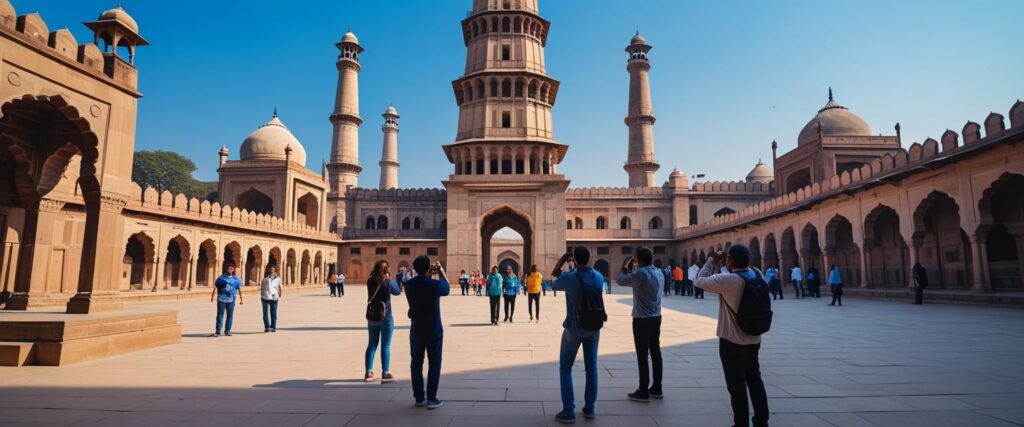
During British rule, Major Robert Smith repaired the minaret in 1828 and even placed a dome on top, which was later removed and relocated nearby, now known as Smith’s Folly.
This layered timeline of construction and restoration raises the question, How Tall Is Qutub Minar?, showing that it is not just a single-period monument but a record of successive rulers, similar to the evolving developments at Agra Fort and Humayun’s Tomb.
Visiting Qutub Minar: Timings, Tickets, and Travel Tips
Qutub Minar attracts thousands of tourists each day, managed and maintained by the Archaeological Survey of India (ASI). Visitors often plan their trip around entry hours, ticket details, and the best time to explore the monument comfortably.
Entry Timings and Days Open
The Qutub Minar complex opens daily from sunrise to sunset. This usually means entry starts around 7:00 AM and closes near 5:00–5:30 PM, depending on the season.
The site remains open every day of the week, prompting many visitors to wonder, How Tall Is Qutub Minar?, unlike some monuments such as the Taj Mahal that close on certain days for prayers, making it easier for both domestic and international tourists to plan their visit without schedule conflicts.

Security staff enforce strict closing hours, so late arrivals may not be allowed in. Since queues can be long, especially during weekends and holidays, arriving early in the morning helps avoid waiting.
Ticket Prices and Free Entry Information
The ASI sets ticket rates for entry. Current charges are:
| Visitor Category | Ticket Price (Cash) | Ticket Price (Cashless) |
|---|---|---|
| Indian Citizens | ₹40 | ₹35 |
| Foreign Tourists | ₹600 | ₹550 |
| Children (under 15 years) | Free | Free |
Tickets can be purchased at the counter near the entrance or online to save time, leaving many visitors curious, How Tall Is Qutub Minar? During peak hours, Indian tourists may face long queues, while foreigners have a separate counter with shorter waiting times.
The free entry for children under 15 makes Qutub Minar a family-friendly destination. This policy is similar to other ASI-protected monuments such as Humayun’s Tomb and the Red Fort.
Night Visits and Light Show Timings
Unlike the Red Fort, which hosts a well-known evening sound and light show, Qutub Minar does not currently have a regular light and sound program. Visitors cannot enter the monument complex at night, as it officially closes at sunset.
However, the minaret and surrounding structures are illuminated after dark for aesthetic viewing from outside the complex. Tourists may see the lighting from nearby roads or restaurants overlooking the site, but no internal night tours are allowed.
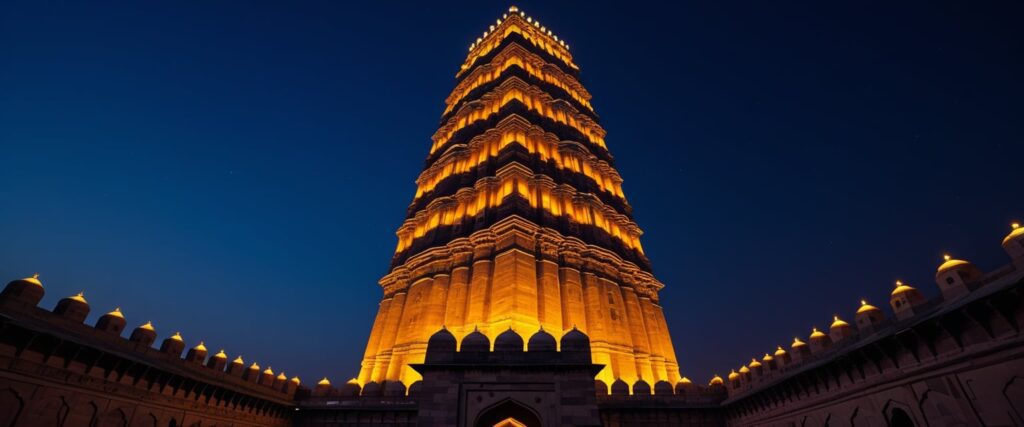
The ASI has occasionally considered special evening access, but as of now, Qutub Minar remains a daytime-only attraction, unlike the Taj Mahal which offers limited night viewing on full moon nights.
Best Time to Visit Qutub Minar
The most comfortable months to visit are November to March, when Delhi’s weather is cooler and less humid. February is often considered ideal due to pleasant temperatures and clear skies.
Tourists who arrive early in the morning experience fewer crowds and better photography conditions as the monument catches the first rays of sunlight. Weekends are usually crowded, so weekdays provide a calmer atmosphere.
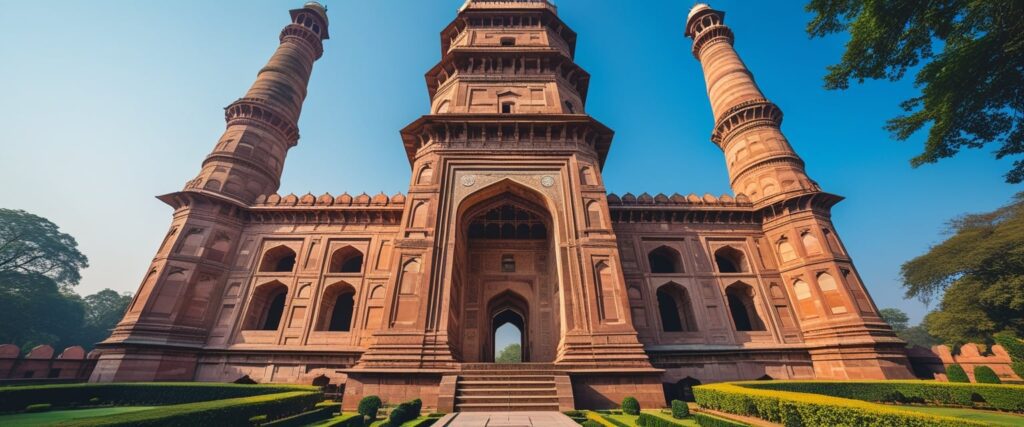
During summer, mid-day visits can be uncomfortable due to heat, so mornings or late afternoons are better. Travelers often combine a trip to Qutub Minar with nearby attractions like Mehrauli Archaeological Park or continue to other ASI monuments such as Humayun’s Tomb for a full heritage day.
Conclusion
How Tall Is Qutub Minar? Amazing Facts Revealed is more than just a question about its height — it is a journey into India’s rich heritage, architectural brilliance, and layered history. Standing tall at 72.5 meters, this UNESCO World Heritage Site continues to inspire awe among travelers, historians, and photographers alike. Whether you visit for its breathtaking design, fascinating past, or cultural significance, Qutub Minar remains a timeless symbol of Delhi’s glory and a must-see landmark for anyone exploring India.
FAQ
1. What is the height of Qutub Minar?
The Qutub Minar is about 73 meters (240 feet) tall.
2. What is Qutub Minar made of?
It is built mainly of red sandstone with some marble and sandstone carvings.
3. What is Qutub Minar famous for?
It is famous as the tallest brick minaret in the world and a UNESCO World Heritage Site.
4. How much time did it take to build Qutub Minar?
Construction took about 75 years (from 1193 to 1368) under multiple rulers.
5. What are the entry timings of Qutub Minar?
It is open daily from 7:00 AM to 5:00 PM.
6. Is Qutub Minar open on Friday?
Yes, Qutub Minar is open every day of the week, including Friday.
7. What is the ticket price of Qutub Minar?
- Indians: ₹40
- Foreigners: ₹600
- Children below 15 years: Free
8. Is a Qutub Minar ticket free?
Entry is free for children below 15 years. Adults need a ticket.
9. Can we visit Qutub Minar at night?
The monument is not open for night visits, except during special events or light shows.
10. What is the timing of the Qutub Minar light show?
The light show usually runs in the evening between 7:00 PM – 9:00 PM, on select days.
11. What is the best time to visit Qutub Minar?
The best time is October to March (pleasant weather), preferably in the morning or late afternoon to avoid heat.
